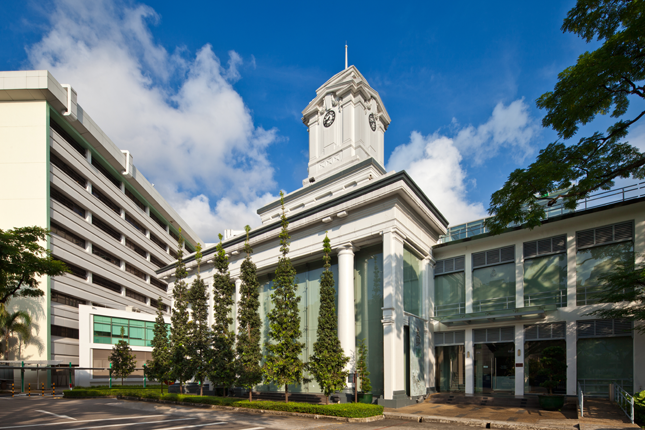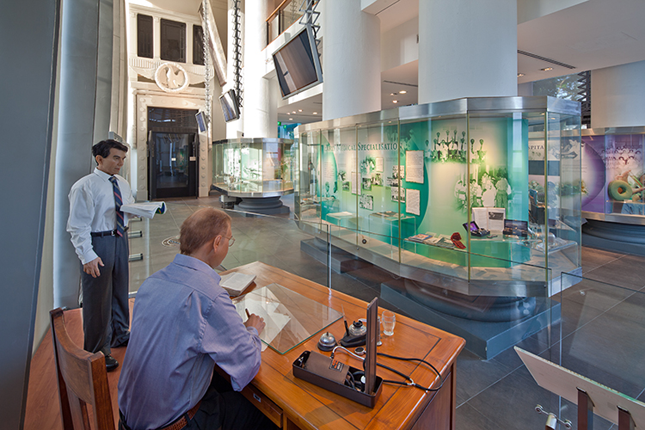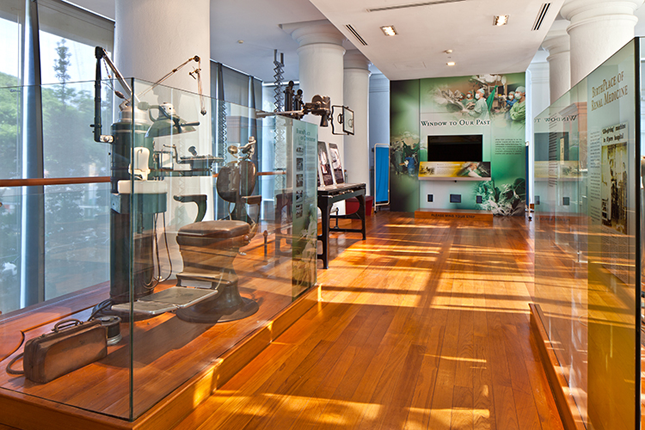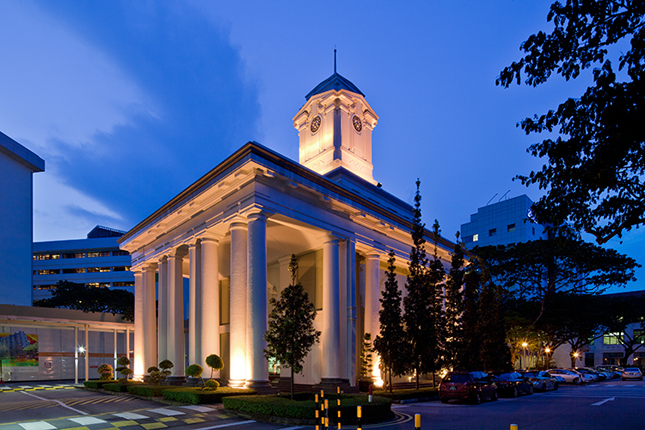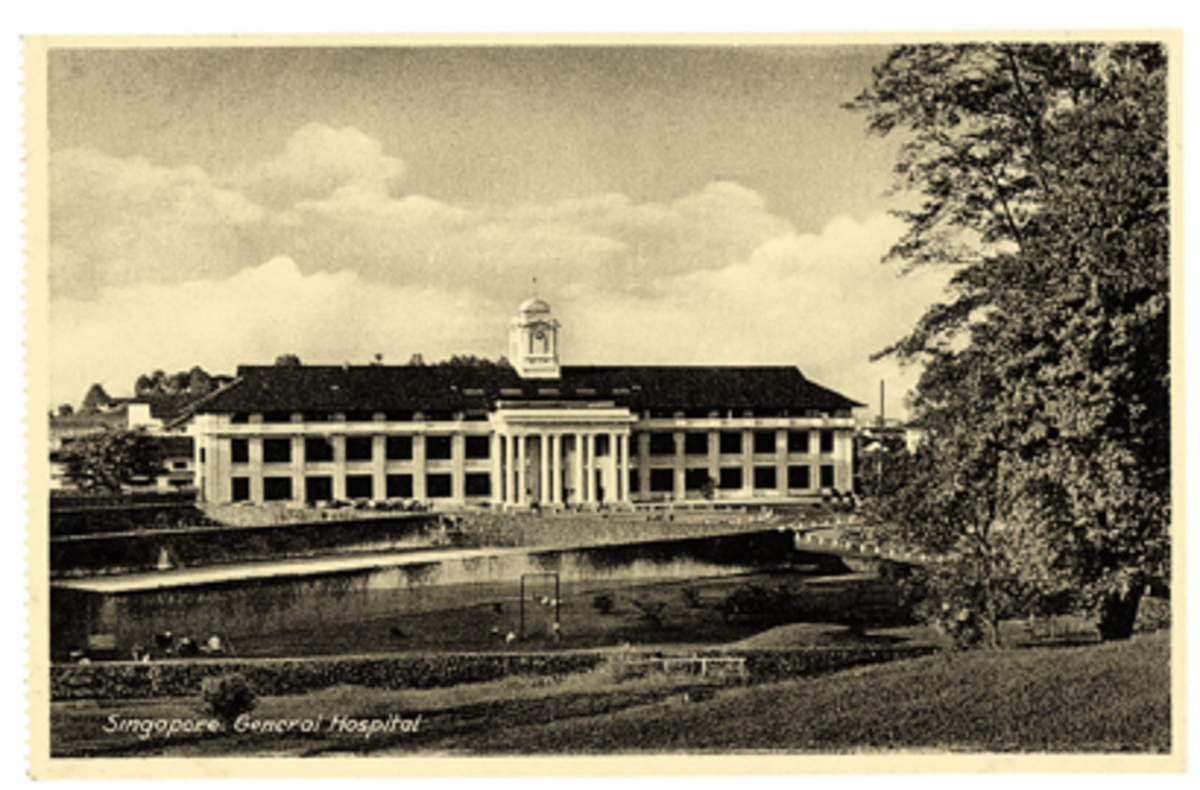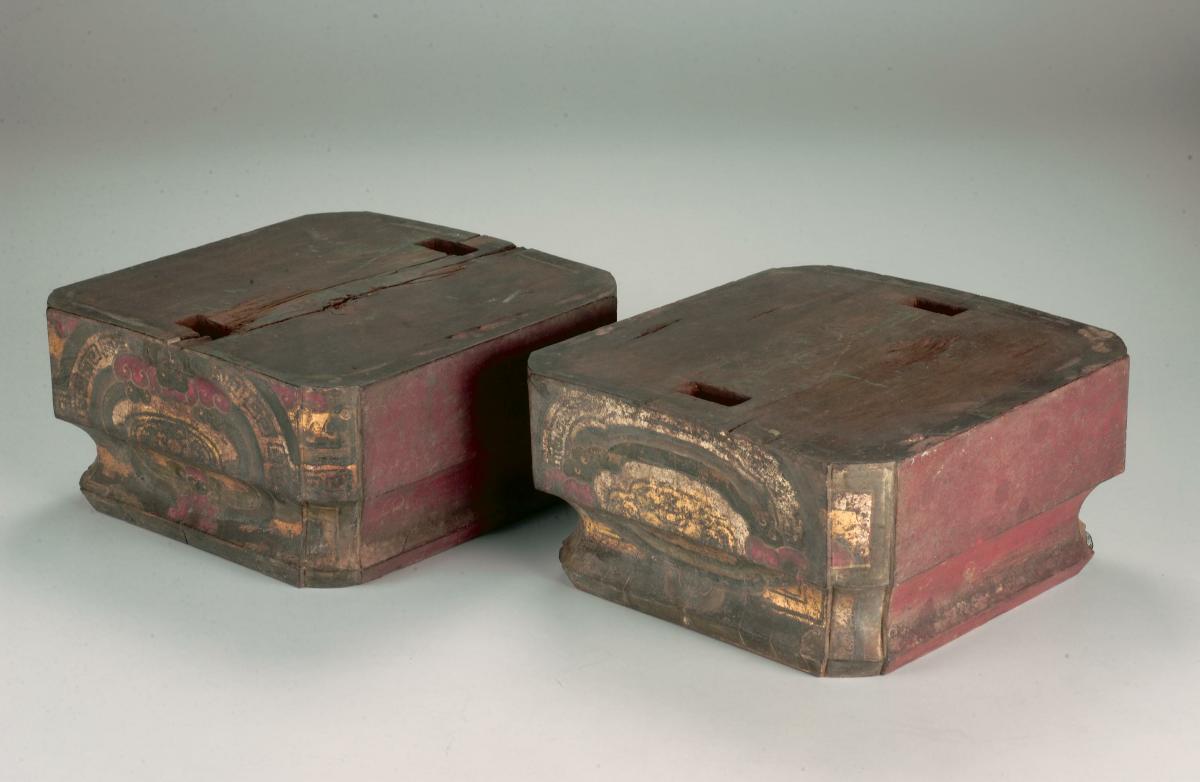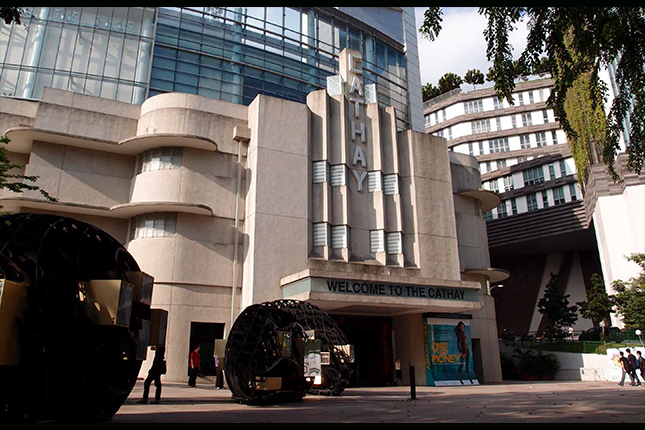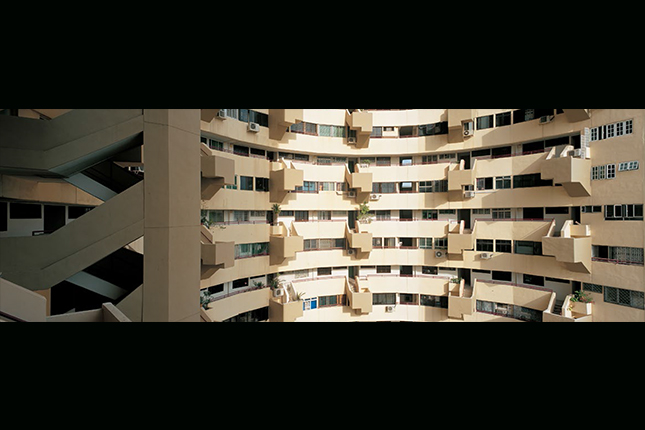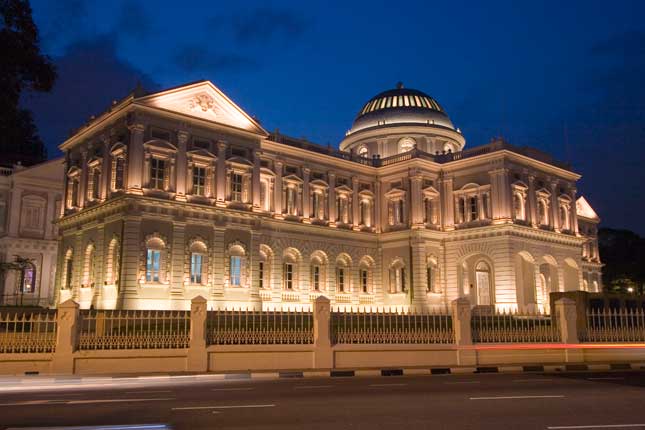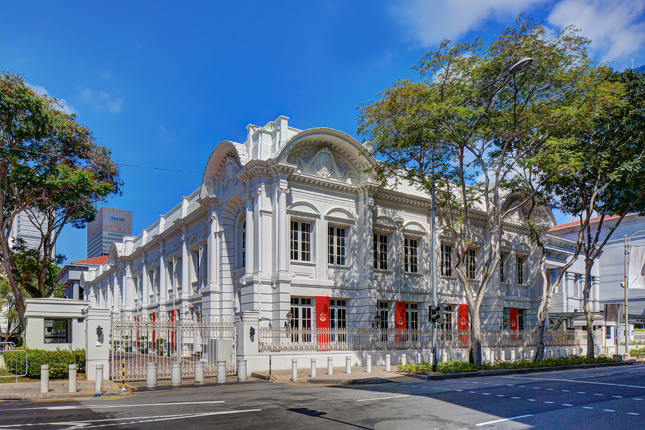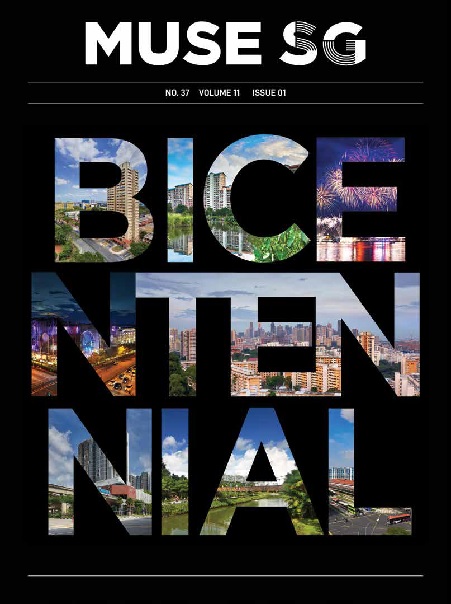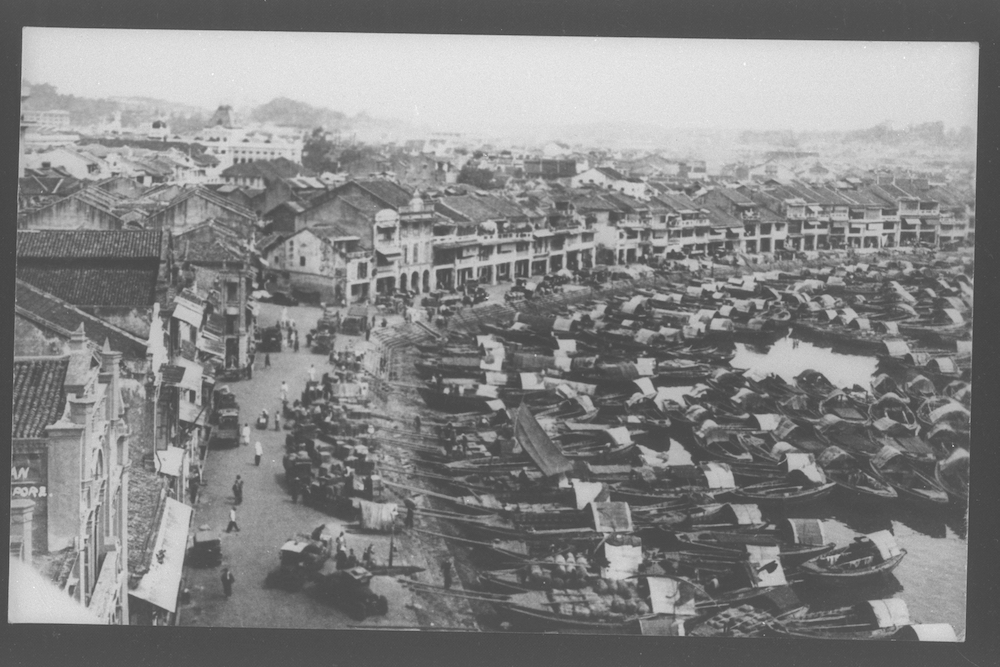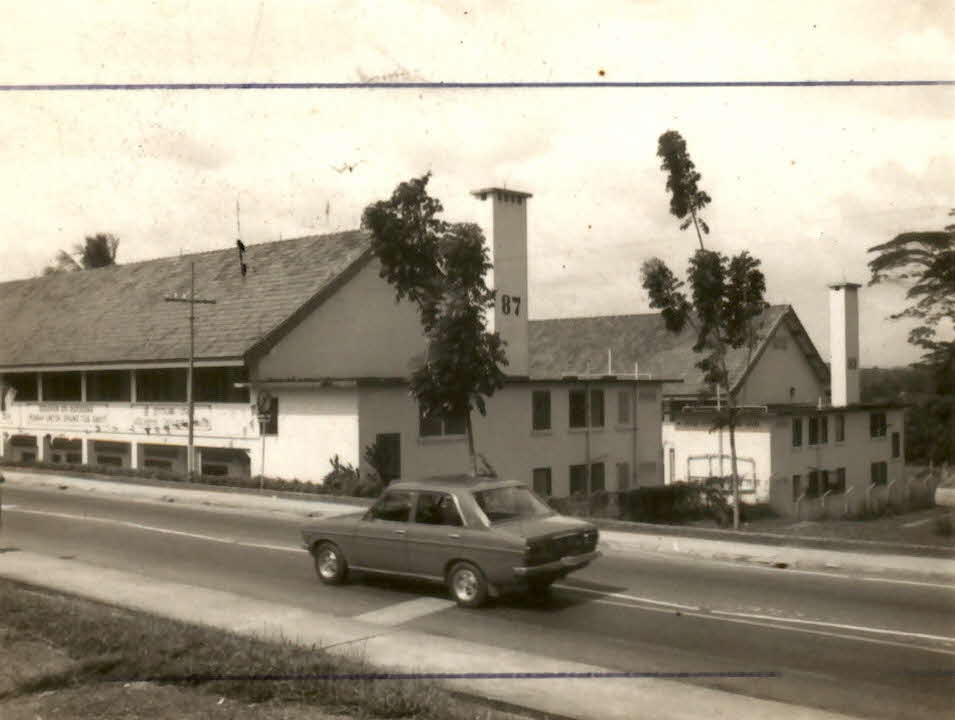Amidst the modern blocks in the sprawling compound of Singapore General Hospital stands a Neoclassical building with its distinctive clock tower. Bowyer Block, as it is called, is the only remaining structure out of the ensemble of hospital buildings constructed in 1926. Having survived the hospital’s redevelopment in the 1980s, Bowyer Block is a standing reminder of the marked improvements in medical facilities during the 1920s. It is also a memorial to those who had given their lives to public healthcare services in Singapore, and in particular, Dr John H. Bowyer.
The General Hospital in Singapore
The history of institutionalised medical services in Singapore can be traced to the establishment of the first General Hospital in 1821. The General Hospital began as a wooden shed in the British cantonment located near present-day Bras Basah Road and Stamford Road. It was rebuilt four times at different locations over the next four decades before its construction at Sepoy Lines, where barracks for sepoys (Indian soldiers) were situated, in 1882. As the hospital was built on elevated grounds, it is also referred to as See-pai Poh in Hokkien or Sei-pai Por in Cantonese (施排坡), which means ‘Sepoy Hill’.
Singapore’s first medical school – the Straits and Federated Malay States Government Medical School – was established in the former Female Lunatic Asylum wing of the hospital in 1905. Later, Tan Teck Guan Building was erected to provide additional facilities for the growing student population. In 1920, the medical school was renamed King Edward VII College of Medicine and moved into the newly completed College of Medicine Building in 1926.
New Hospital
Around the same time, the hospital was rebuilt and declared open on 29 March 1926 as Singapore General Hospital by Governor of the Straits Settlements Sir Laurence N. Guillemard. This marked an important milestone in Singapore’s medical history. In the past, the General Hospital provided medical services only for military and police personnel, as well as for seamen who transited at Singapore. The new Singapore General Hospital, however, was a public medical institution open to locals regardless of race or social background, giving the largely immigrant society access to modern healthcare amenities and services.
The newly built hospital comprised three separate blocks – the Upper, Middle, and Lower Blocks – with 800 beds altogether. Among other facilities were operating theatres, kitchens, an outpatient block, a pathology laboratory, and living quarters for the nurses. Modern lifts were also installed in the hospital. Indeed, the hospital represented the social and scientific progress of Singapore at that time.
Second World War
When the Second World War broke out in Singapore, Singapore General Hospital was cut off from its water supply. Consequently, hundreds of patients perished and were buried in a mass grave in the hospital compound. Three days after the fall of Singapore, the occupying Japanese forces seized control of the hospital, which became the main surgical hospital for the Japanese in Southeast Asia.
After the war, the Upper, Middle, and Lower Blocks were renamed Bowyer, Stanley, and Norris Blocks respectively, in memory of three medical officers – Dr John H. Bowyer, Dr Cuthbert Stanley, and Dr Victor Norris. These three doctors had served in the hospital before the war and died during the Japanese Occupation.
Dr John H. Bowyer
Bowyer Block commemorates Dr John H. Bowyer, Chief Medical Officer of Singapore General Hospital at the time of Singapore’s capitulation. He had reorganised local hospitals for wartime conditions and took charge of the casualties lying in the Mental Hospital in the first five weeks after the British surrendered. Dr Bowyer was later sent to Changi Prison to serve as a civil medical officer.
Unfortunately, he was arrested in January 1944 and severely tortured by the Kempeitai (Japanese Military Police) for collecting money from outside the prison and distributing food without permission. Extremely ill, he was sent to Sime Road Camp in October that same year and died shortly after on 1 November at the age of 43. He was later buried at Bidadari Cemetery.
Functions
Throughout the years, Bowyer Block functioned as the main administration building of the hospital. Also located in the building were the staff quarters, the first- and second-class male wards, and some first-class female wards. In addition, the building housed various departments and clinics, including the School of Nursing, Department of Renal Medicine, and a small X-ray department.
To accommodate the growing population in Singapore and more sophisticated medical equipment, the hospital decided to modernise its facilities and replace most of its blocks in phases during the 1970s. On 12 September 1981, the present Singapore General Hospital was officially opened by Prime Minister Lee Kuan Yew. The central section of Bowyer Block is the only remaining structure of the three 1926 buildings.
Architecture
Government Architect Major Percy H. Keys, who also designed the Former Fullerton Building and the College of Medicine Building, was the architect of Bowyer Block. He began his private practice later, establishing the architectural firm Keys & Dowdeswell. The building originally had wing extensions on both sides of the portico; one was subsequently demolished in the early 1980s to make way for new hospital blocks and buildings.
The most prominent feature of Bowyer Block is its clock tower. There are four clock faces on the tower; each clock face is flanked by elegant Doric pilasters and topped by a triangular pediment with beautiful mouldings of festoons – decorative wreaths of flowers, fruits and ribbons. Colossal Tuscan columns line the façade of the two-storey portico, adding to the building’s magnificence and grandeur.
Bowyer Block Today
Presently, Bowyer Block is home to Singapore General Hospital Museum, which showcases the long history and rich heritage of medical practice in Singapore.
Our National Monuments
Our National Monuments are an integral part of Singapore’s built heritage, which the National Heritage Board (NHB) preserves and promotes for posterity. They are monuments and sites that are accorded the highest level of protection in Singapore.




